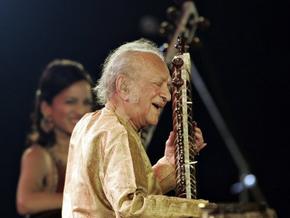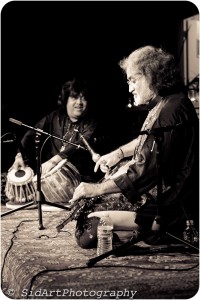Text by Dawoud Kringle
Not long ago, I had an interesting experience.
Some time ago I attended a performance at The Stone in New York City with Steve Gorn and Curtis Bahn. Gorn played flute, bansuri, and percussion, and Bahn played electronic sitar, esraj, and laptop. As I sat on the floor in the uncomfortably hot and humid room, I was enraptured by the multi-layered sounds of the two masters. Gorn is no stranger to listeners of Indian classical music. Additionally, he has a background in classical and non-classical western music; trained in jazz and electronic music. Bahn, a student of Ustad Shaheed Parvez Khan, and computer programmer, had commissioned the building of a completely different instrument that combined the sitar with new design technologies, and unprecedented electronics, including a computer interface. The instrument has WII controller – motion sensors / physical sensors, pitch sensor, accent sensor, etc. The bow of his esraj was outfitted with a motion sensor. These all ran through a laptop with a program he wrote. The duo made marvelous use of both acoustic and electronic sounds, blending them perfectly within their improvisations. Samples were looped, tabla tarang sounds held down intricate rhythms. The overall concert was astonishingly beautiful. It was a music that spoke of a timeless truth. I left the Stone with a refreshed outlook on everything; something the best musical performances should do for the audience.
Not long afterward, my friend Sohrab (who publishes this magazine) started bugging me for the article I promised him. Naturally, I said “Yeah, I’ll get right on it” (poor Sohrab; he hears that from me all too often.) But, after some rumination, I abandoned the idea of writing a review. There was something else happening here; evidence of something greater.



